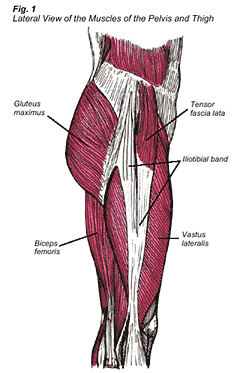

Next, the examiner passively flexes the knee to about 90 degrees. The symptomatic side should be facing upward (i.e., closest to the ceiling). To perform the Ober test, have the patient lie on his or her uninvolved side in the lateral decubitus position. Symptoms are also most pronounced when the arc of motion reaches 30-40 degrees of knee flexion and occurs along the lateral aspect of the knee.Ĭlinical examination testing for ITB dysfunction is best elicited utilizing the Ober Test. Other predisposing structural risk factors are gait abnormalities (i.e., overpronation), leg length discrepancies, and varus deformity of both knees. Several etiologies have been suggested, including the friction induced by the band catching the lateral epicondyle of the femur, compression of the underlying connective tissue and fat, and chronic inflammation of the ITB bursa. However, there are some conflicting thoughts as to the exact mechanism eliciting the pain experienced. This condition seems to be secondary to overuse and repetitive motion. This condition can be seen in individuals with cerebral palsy and polio, however, more commonly in individuals who have increased their physical activity (particular lower extremity performance).Ĭommon presentations are usually runners or cyclists that have increased their mileage during recent training intervals. ITB syndrome and contracture is a condition secondary to increased tension throughout the structure most commonly causing symptoms near the distal insertion site. Surgery is a last resort used for refractory cases. NSAID use may be beneficial to reduce inflammation.



Treatment generally initiates with ITB stretching and physical therapy. This snapping is the tense fascial structure catching on the greater trochanter as it moves in the before mentioned motions. This portion of the band remains posterior to the greater trochanter in hip extension, however, moves anteriorly when flexed, adducted, or internally rotated causing a "snapping" mechanism. Pathophysiology comprises thickening of the posterior aspect of the ITB or anterior tendon fibers of the gluteus maximus muscle near its insertion. However, surgical consideration is a potential option for chronic, recurrent, or recalcitrant cases that continue to persist despite exhausting of all nonoperative management options after several months.Įxternal snapping hip syndrome, or externa coxa saltans has the potential to cause chronic pain in the lateral aspect of the hip located over the greater trochanter of the femur. Regardless of the ITB condition, most patients experience complete resolution of symptoms following nonoperative management modalities alone. Athletes affected are often involved in sports heavily reliant on peak lower extremity function and performers, such as runners, skaters, or cyclists. For example, proximally based ITB conditions include external snapping hip syndrome, which occurs secondary to ITB friction as these fibers rub (or "snap") over the greater trochanter of the femur Distally, ITB pathology most commonly manifests as some form of lateral-based knee pain (commonly ITB syndrome, or ITBS). Moreover, these conditions will vary depending on the specific anatomic location of the dysfunction.
#Where is it band located professional
There are multiple clinical conditions that can present secondary to a spectrum of ITB dysfunction and many of these manifest in physical laborers to recreational or high-level professional athletes. Distally, the ITB becomes a distinct soft tissue layer of the lateral knee. The TFL is the deep investing fascia of the thigh, encompassing the muscles of the hip and lower extremity around this region. Proximally in the thigh, the ITB receives fascial contributions from the deep fascia of the thigh, gluteus maximus, and tensor fascia lata (TFL). The ITB spans the lower extremity on its lateral aspect before inserting on Gerdy's tubercle on the proximal/lateral tibia. The ITB is also sometimes known as Maissiat's band. The iliotibial band tract or IT band (ITB) is a longitudinal fibrous sheath that runs along the lateral thigh and serves as an important structure involved in lower extremity motion.


 0 kommentar(er)
0 kommentar(er)
